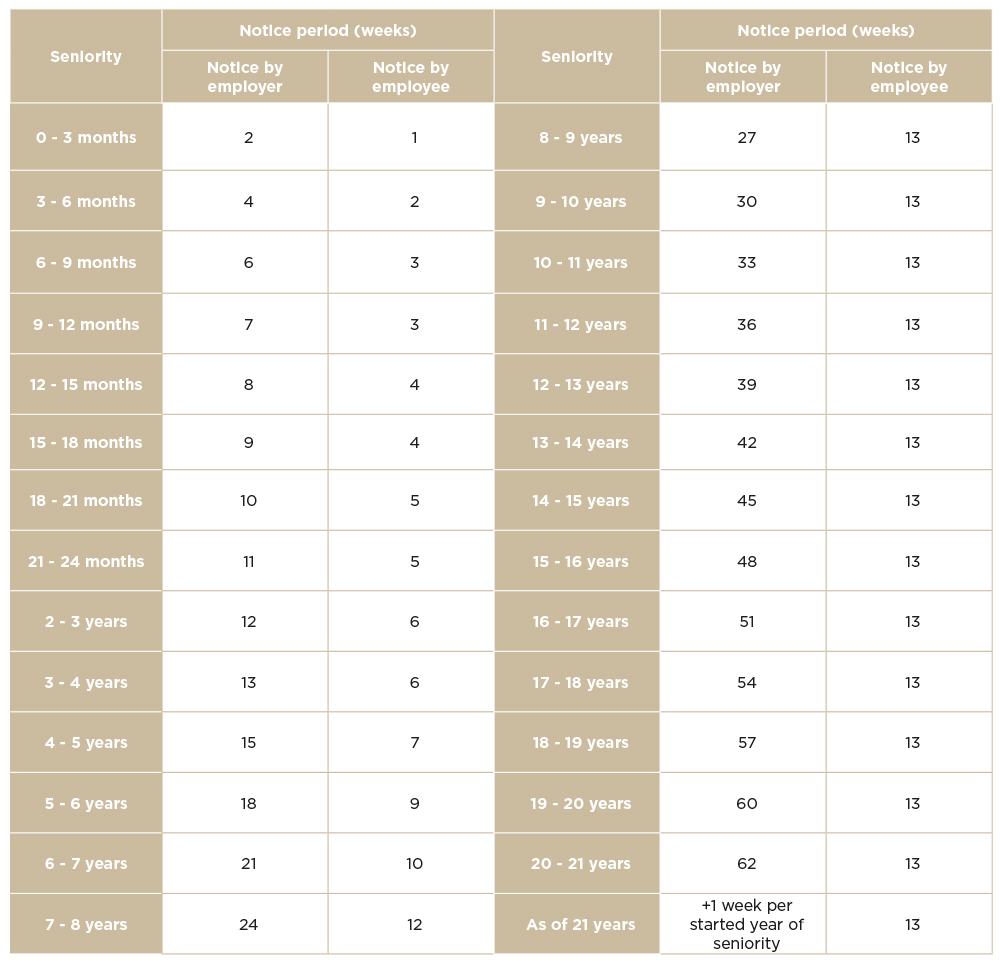Termination of THE employment CONTRACT

1. Termination with a notice period
The length of the new notice periods depends solely on the seniority of the employee. Employers and employees can however agree to a more favourable terms regarding the notice period on an individual or even on company level.
As from the 1st of January 2014, the notice period is determined in 2 periods :the period before 1 January 2014 and the period as from 1 January 2014.
The first part of the notice period will be determined according to the legal, statutory and conventional rules which apply to the employee concerned on the 31st of December 2013. This means that (the first part of) the notice period needs to be set as if the employment contract would have been terminated on 31 December 2013.
The second part of the notice period is calculated based on the seniority acquired by the employee as of the 1st of January 2014. For this second part, the following notice periods will apply.

2. Breach of contract
Both the employer and the employee can also terminate the employment contract with immediate effect (‘breach of contract’). In this case a severance pay is due by the party breaking the contract, corresponding to the salary that should have been paid, in case the employment contract was ended by a notice period (see above).
3. Severe fault
An employment agreement can also be terminated due to a severe fault. When terminating the contract due to severe fault, there is no severance pay due.
A severe fault is defined as “reasons/incidents that make any professional relation between employer and employee impossible in an immediate and permanent manner”.
A very strict legislation regarding the formalities is applicable to this kind of termination.
The termination should take place within 3 days as from the discovery of the urgent reason and within the following 3 days these urgent reasons that explain the termination of the contract, need to be notified to the defaulted party.
If the employee should be a ‘protected’ employee a special procedure before the Labor Court is applicable.
4. Motivation of the termination
The employer is required to provide a motivation for the termination of the employment agreement to the employee, in case the employee requests for such motivation in writing. If the employer does not provide this motivation he will be fined with an amount that equals 2 weeks of salary.
If the employee can proof that the motivation for the termination is obviously unreasonable, he can claim an indemnity of 3 up to 17 weeks of salary.
5. Protection from termination of the employment contract
Many categories of employees carry an extra protection against termination of their employment contract (e.g. a pregnant employee, an employee representative in works council,…). The employer remains in the possibility to terminate their employment contract at any time. However, proof has to be provided by the employer that this termination is based on reasons other than the reason these employees are protected for (e.g. pregnancy, membership of the works council,…). In some cases the employer is required to follow a specific procedure before the labour court.
6. Fixed term contract & contracts for a specific task
Fixed-term contracts and contracts for a specific task will end automatically when they have reached the end date / date of finishing this task.